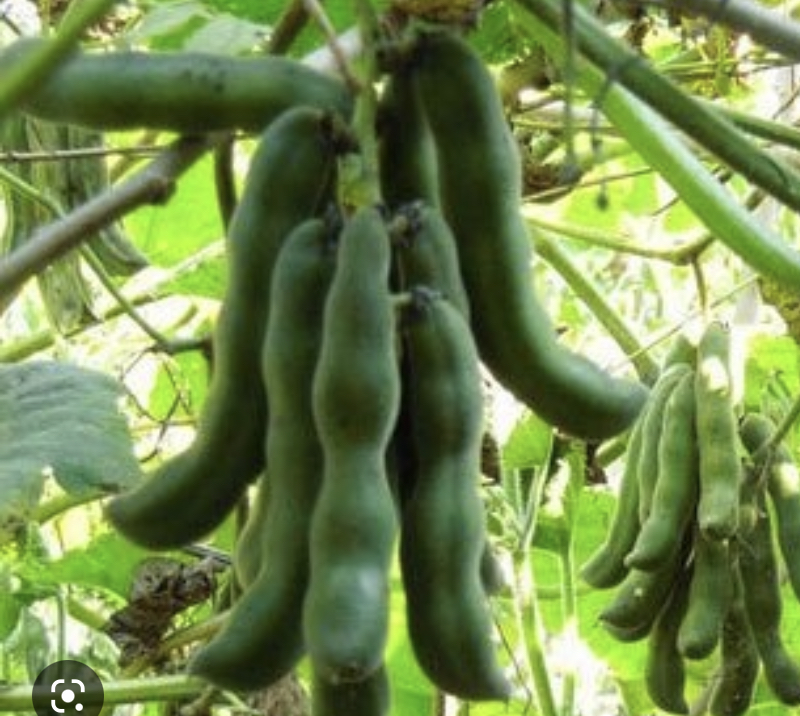目次
アーユルヴェーダに欠かすことのできないハーバルオイル
アーユルヴェーダについて説明するとき、ハーバルオイル抜きに語ることはできません。アーユルヴェーダのハーバルオイルは、アーユルヴェーダ医学の処方の中でも、最も偉大な薬の一つです。そこで、今回からアーユルヴェーダハーバルオイルについて、いくつかの重要な情報をお伝えしたいと思います。
アーユルヴェーダでは、オイルは 「Taila(タイラ)」と呼ばれ、教典のいたるところでいくつものオイルについて説明されています。アーユルヴェーダのセラピーでは、ハーバルオイルは体の内面と外面の両方に働きかけ、古代のアーユルヴェーダの専門家の見解では、オイルという形を通してハーブを体内に浸透させることを容易にするとのことです。
また、ハーバルオイルの製造も非常に興味深いものです。アーユルヴェーダの教典には、アーユルヴェーダの薬用オイル(ハーバルオイル)を調合するための所定の手順が記載されています。
ハーバルオイル調合の基本的な考え方
アーユルヴェーダの教典には、ハーバルオイルの調合のためのいくつかのベースオイルについて記されています。そして、このベースオイルは、ハーバルオイルを調合する前に洗浄する必要があり、この洗浄の手順を「Taila Murcha(タイラムールチャ)」と呼んでいます。この洗浄には、さまざまなハーブが使用され、その方法もベースオイルによって異なります。この手順の主な目的は、オイルから悪臭やその他の毒素を取り除き、その潜在的な効果を高めることにあります。アーユルヴェーダで使用される一般的なベースオイルは、セサミオイル(ゴマ油)、ギー、キャスターオイル(ひまし油)、マスタードオイル、ココナッツオイルなどです。
基本的な材料
アーユルヴェーダのハーバルオイルの調合に必要な基本的な材料は以下の通りで、それぞれの分量が16:4:1になるようにします。
ハーブまたはハーブの煎じ薬(レシピによる):16
洗浄したベースオイル:4
ハーブのペースト(カルカ):1
基本的な作成方法
全ての材料を加えよく混ぜます。作成するオイル毎に適切な方法で加熱します。オイルによっては、推奨される燃料を使用して熱を与える必要があり、常に適度な熱に調整する必要があります。
ハーバルオイルの4つの段階
アーユルヴェーダハーバルオイルの作成過程には4つの段階があり、熱を加えている間、その段階を通過します。
1. ムルドゥパーカ
2. マディヤパーカ
3. カーラパーカ
4. ダグダパーカ
ムルドゥパーカ
一般的に、「ムルドゥパーカ」のオイルは鼻腔洗浄(ナスヤ)を行うために推奨されています。
マディヤパーカ
「マディヤパーカ」の段階のオイルは、経口摂取や浣腸療法に用いられます。
カーラパーカ
「カーラパーカ」のオイルは、マッサージやその他の外部治療に使用されます。
ダグダパーカ
「ダグダパーカ」のオイルは、加熱し過ぎの状態なためアーユルヴェーダの治療用としては推奨されません。通常、熱の供給はダグダパーカの段階に入る前に止める必要があります。
4つの段階の見分け方
各段階は、ペーストの性質によって識別されます。ムルドゥパーカの段階では、ペーストはワックスのように見え、粘着性があります。マディヤパーカの段階では、ハーブペーストは芯の形に巻くことができ、火をつけると音がしません。カーラパーカでは、オイルはペーストからはっきりと分離されます。
きちんとしたオイルができるまでには、何日もかかります。
オイルの種類
アーユルヴェーダの教典には非常に多くの種類のオイルが記載されています。これらの種類は、ドーシャ、使用する部位、病気などによって分類することができます。
ヴァータドーシャのためのハーバルオイル
• サルシャパーディタイラ
• アシュワガンダタイラ
• ケダムビンダムタイラ
• プラサリニタイラ
• ダシャムーラタイラ
• バーラコランダタイラ
• マハバーラタイラ
• マハーマシャタイラ
• ヴァータヴィドュランガタイラ
ピッタドーシャのためのハーバルオイル
• ウシラディータイラ
• クマーリタイラ
• ピンダタイラ
• ラタタイラ
• ヴィサルパハーラタイラ
• ディビヤンガナディータイラ
• ニンバディタイラ
• ニシャディタイラ
• ニーリーヤーディタイラ
カパドーシャのためのハーバルオイル
• カナカタイラ
• コラシュレシュマタイラ
• バツタイラ
• ラトゥルヌタイラ
• シッダールタタイラ
• ニルグンディータイラ
★アロマティカショップではスリランカ産のハーバルオイルを取り扱っています。ぜひご利用ください。
英国アーユルヴェーダカレッジでは、サットヴァを高めるための様々な実践法を学ぶことによって、健康維持や病気の予防をするための知識を深めていきます。また、スリランカ人のアーユルヴェーダドクターから正真正銘のアーユルヴェーダの智慧を学べる日本で有数の学校です。アーユルヴェーダの学びを深めたい方、将来セラピストとして活躍したい方、健康管理のために日々の生活に取り入れたい方は、是非お気軽に無料説明会や体質診断セミナーにご参加ください。ご相談お待ちしております。
ライタープロフィール
 アーユルヴェーダ医師ディネッシュ先生 / Dr. Dinesh Edirisinghe
アーユルヴェーダ医師ディネッシュ先生 / Dr. Dinesh Edirisinghe
スリランカ国立コロンボ大学アーユルヴェーダ・メディスン&サージェリー卒業
脈診と額に手を当てることにより、クライアントの体質はもちろん、現在の病気や体調、過去の病歴までを読み取とることから「ドクターCTスキャン」として有名。
 アーユルヴェーダ医師
アーユルヴェーダ医師
ディネッシュカ先生 / Dr. Dinushka Dissanayake
スリランカ国立コロンボ大学アーユルヴェーダ・メディスン&サージェリー卒業
ディネッシュ先生の最愛の奥様であり、婦人科とメンタルヘルスの専門家。
※「ドクターCTスキャン」の異名をもつ有名なディネッシュ先生と奥様のディネッシュカ先生についてさらに詳しいプロフィールはこちらをクリック。
ENGLISH
Ayurveda Oil
While talking about Ayurveda it is difficult to forget about Ayurveda Herbal Oil. Ayurveda herbal oil is one of the greatest medicines that used in therapies among the other Ayurveda Medicine formulas. Therefore, from this article we would like to share some important information about the Ayurveda Herbal oil. In Ayurveda oil is known as “Taila” As an ancient Ayurveda expert view, through the form of oil it is easy to insert herbs into the body. In Ayurveda therapies, herbal oil is used in both internal and external ways and there are a number of oils described all over this amazing philosophy.
The production of Ayurveda oil is also very interesting. There are certain procedures mentioned in Ayurveda texts to prepare the Ayurvedic medicated oil.
Basic concept of Ayurveda herbal oil preparation
According to the Ayurveda concepts, there are certain based oils are described for Ayurvedic herbal oil preparation. And this base oil should be cleaned before the preparation of certain oil and this cleansing procedure is known as “Taila Murcha”. For this, different herbs are used and method of cleansing for each base oil differs from one to another. The main objective of this procedure is to remove the bad odour, other toxins from the oil and enhance the power of its meditative properties.
As the common basic oils, Sesame oil, Ghee, Caster oil, Mustard oil and Coconut oil are used in Ayurveda.
In order to termilogy of Ayurveda oil preparation basic ingredients for the Ayurveda oils are;
16 parts of Herbs or herbal decoction as per the recipe
4 parts of Cleansed herbal oil
1 parts of Herbal paste (Kalka)
Add all together and mix it well. Heat the mixture until the proper term of the oil appears. For some oils, heat should be given by using the recommended fuel source and always moderate heat should be used.
There are 4 stages are described during in the boiling Ayurveda Oil which passes while heat applying.
1. Mrudu Paka
2. Madhya Paka
3. Khara Paka
4. Dagdha Paka
Generally, “Mrudu Paka” oils are recommended for Nasal cleansing treatments. “Madhya Paka” oils are recommended for oral consumption and therapeutic enema treatments. “Khara Paka” oil for the external massages and for the other external treatments. And at the stage of “Dagdha Paka” oil is not recommended for any Ayurveda therapeutic applications. Usually heat supply should be stopped before the stage of “Dagdha Paka.” Each stage is identified by the nature of the paste. In the stage of “Mrudu Paka” paste looks like wax and it is sticky. In the stage of “Madhya Paka” the herb paste can be rolled into the form of wick and when it puts on fire does not make sound. In “Khara Paka” mixture become dirty looking and oil gets clearly separated from the paste.
It takes number of days to complete a proper oil production. Duration is changing from oil to oil.
Types of oil
There are huge varieties of oils are described in Ayurveda. These types can be categorised according to the Dosha, place of application in the body, diseases and etc…
Ayurveda oil for Vata Dosha
• Sarshapadee oil
• Ashwagandha oil
• Kedum bindum oil
• Prasarini oil
• Dashamula oil
• Balakorandaoil
• Maha bala oil
• Maha masha oil
• Vataviduranga oil
Ayurveda oil for Pitta Dosha
• Ushiradee oil
• Kumari oil
• Pinda oil
• Rata oil
• Visarpahara oil
• Divyanganadee oil
• Nimbadee oil
• Nishadee oil
• Neelyadee oil
Ayurveda oil for Kapha Dosha
• Kanaka oil
• Kolashleshma oil
• Batu oil
• Ratulunu oil
• Sddhartha oil
• Nirgundee oil













